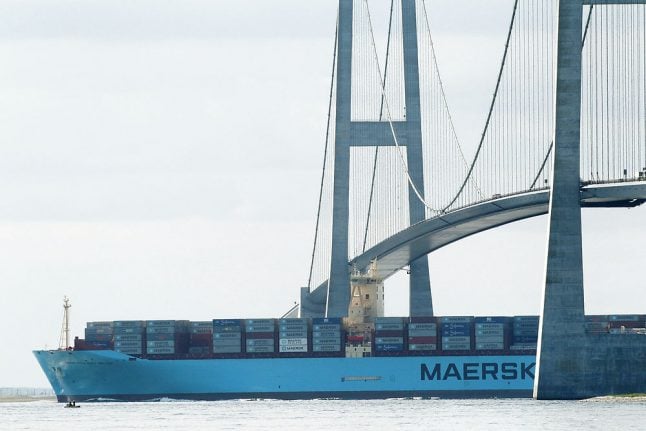Maersk's new ice class container vessel, Venta Maersk, embarked on a trial journey from the Russian far eastern port of Vladivostok in late August, completing the Arctic route in five weeks.
“We are carrying out a one-off trial passage of the Northern Sea Route from East to West,” said Janina von Spalding, a spokeswoman for the world's biggest shipping company.
The vessel earlier made stops at Russia's Vostochny Port and Busan in South Korea before passing through the Bering Strait and Germany's Bremerhaven and finally entering Saint Petersburg.
The ship carrying 3,600 containers and designed to operate in extreme weather conditions was assisted by nuclear icebreakers.
The route along Siberia's northern coast could until now only be used by far smaller ships and was only passable several weeks a year.
But as a result of rising temperatures and melting ice it is becoming accessible for increasingly longer periods.
Russia is investing heavily in the development of this maritime shortcut that allows ships to cut the journey to Asian ports by 15 days, compared with the conventional route through the Suez Canal.
Maersk said the one-off trial crossing presented a “unique opportunity to gain operational experience in a new area and to test vessel systems and crew capabilities”.
The company stressed however it “currently does not see the Northern Sea Route as a viable commercial alternative to existing east-west routes”.
The passage is only feasible “around three months a year” and requires additional costs to hire accompanying icebreakers, Maersk said.
Nuclear-powered liquified natural gas carriers already use the Northern Sea Route to ship their cargo to Europe from the Arctic Yamal peninsula, where Russia's Novatek and France's Total opened a giant plant last year.
Russian President Vladimir Putin wants the Northern Sea Route to become a global transport artery and this month once again called on “all interested parties to develop this promising route”.
In its draft budget for 2019-2021, Russia plans to invest more than 40 billion rubles (519 million euros) into the development of the route.
This includes investing in port infrastructure and nuclear icebreaker construction in order to boost ship traffic.
Sea ice in the Arctic has shrunk dramatically in just a few decades.
Russian energy expert Ruslan Tankayev believes the Northern Sea Route could be passable all year round by 2050.
He said that global warming is a “terrible evil” for countries such as Africa and Latin America, but added it could provide opportunities for Russia and Canada.
The route, he added, is not only several thousand kilometres shorter than passing through the Suez Canal but also much safer with virtually no piracy risks.
Tankayev predicted that Arctic traffic will grow to 40 million tonnes in the coming years.
This rush worries environmental protection groups who fear oil spills that would threaten a well preserved ecosystem.
“It's important to know what kind of fuel will be used,” said Greenpeace activist Rashid Alimov.
An accidental oil spill would be very dangerous as there is practically no infrastructure to treat the consequences and oil stays in the environment longer in cold weather, Alimov said.
READ ALSO: Denmark's Maersk Tankers ends Iran shipping after renewed US sanctions



 Please whitelist us to continue reading.
Please whitelist us to continue reading.